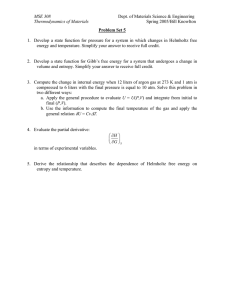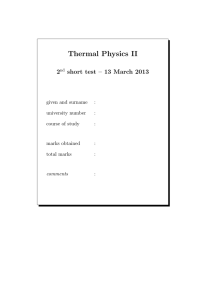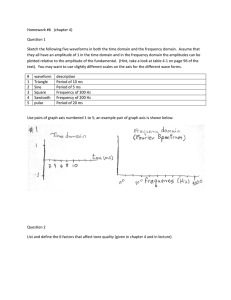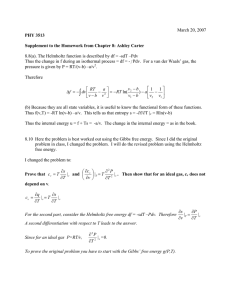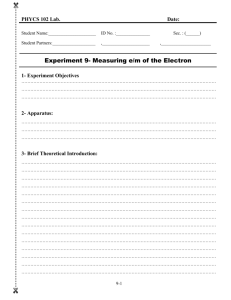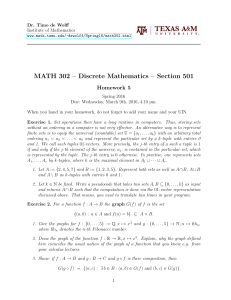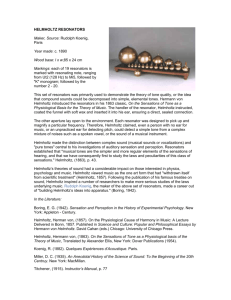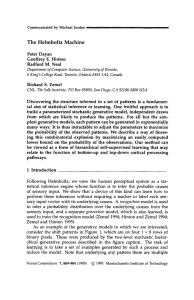The Helmholtz Machine
advertisement
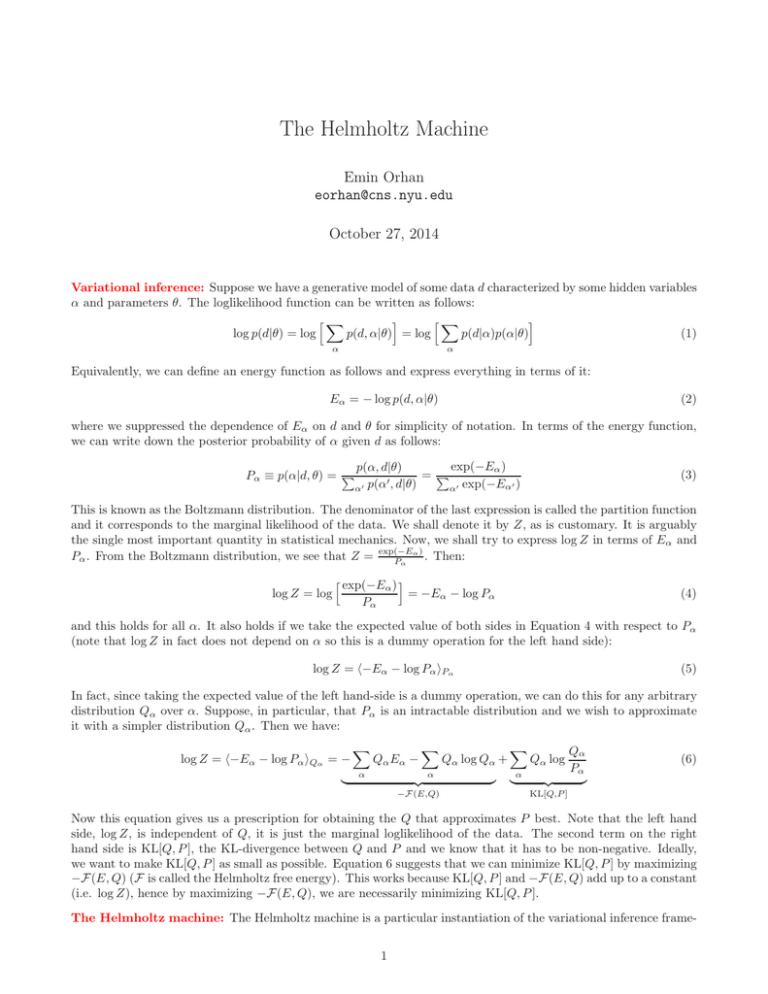
The Helmholtz Machine
Emin Orhan
eorhan@cns.nyu.edu
October 27, 2014
Variational inference: Suppose we have a generative model of some data d characterized by some hidden variables
α and parameters θ. The loglikelihood function can be written as follows:
hX
i
hX
i
log p(d|θ) = log
p(d, α|θ) = log
p(d|α)p(α|θ)
(1)
α
α
Equivalently, we can define an energy function as follows and express everything in terms of it:
Eα = − log p(d, α|θ)
(2)
where we suppressed the dependence of Eα on d and θ for simplicity of notation. In terms of the energy function,
we can write down the posterior probability of α given d as follows:
Pα ≡ p(α|d, θ) = P
exp(−Eα )
p(α, d|θ)
= P
′
α′ p(α , d|θ)
α′ exp(−Eα′ )
(3)
This is known as the Boltzmann distribution. The denominator of the last expression is called the partition function
and it corresponds to the marginal likelihood of the data. We shall denote it by Z, as is customary. It is arguably
the single most important quantity in statistical mechanics. Now, we shall try to express log Z in terms of Eα and
α)
Pα . From the Boltzmann distribution, we see that Z = exp(−E
. Then:
Pα
log Z = log
h exp(−E ) i
α
= −Eα − log Pα
Pα
(4)
and this holds for all α. It also holds if we take the expected value of both sides in Equation 4 with respect to Pα
(note that log Z in fact does not depend on α so this is a dummy operation for the left hand side):
(5)
log Z = h−Eα − log Pα iPα
In fact, since taking the expected value of the left hand-side is a dummy operation, we can do this for any arbitrary
distribution Qα over α. Suppose, in particular, that Pα is an intractable distribution and we wish to approximate
it with a simpler distribution Qα . Then we have:
log Z = h−Eα − log Pα iQα = −
X
Qα Eα −
α
|
X
Qα log Qα +
α
{z
−F (E,Q)
X
Qα log
α
}
|
{z
KL[Q,P ]
Qα
Pα
}
(6)
Now this equation gives us a prescription for obtaining the Q that approximates P best. Note that the left hand
side, log Z, is independent of Q, it is just the marginal loglikelihood of the data. The second term on the right
hand side is KL[Q, P ], the KL-divergence between Q and P and we know that it has to be non-negative. Ideally,
we want to make KL[Q, P ] as small as possible. Equation 6 suggests that we can minimize KL[Q, P ] by maximizing
−F (E, Q) (F is called the Helmholtz free energy). This works because KL[Q, P ] and −F (E, Q) add up to a constant
(i.e. log Z), hence by maximizing −F (E, Q), we are necessarily minimizing KL[Q, P ].
The Helmholtz machine: The Helmholtz machine is a particular instantiation of the variational inference frame1
work described above. It is a neural network that has an input layer and a number of hidden layers stacked on
top of each other. The consecutive layers are connected through both feedforward and feedback connections. The
feedforward connections are also known as the recognition weights and the feedback connections are known as the
generative weights for reasons that will be clear shortly.
In the previous subsection, we found that we need to calculate the Helmholtz free energy F (E, Q) where E is the
energy function and Q is the approximation to the posterior. To make this calculation tractable, we are going to
assume that Q is a separable distribution in each layer (we shall make a similar assumption for E as well). This
means that given the activities of all units in layer l, the units in layer l + 1 are conditionally independent. More
specifically, Qα takes the following form:
Qα =
YY
sl
sl qjl (φ, sl−1 ) j 1 − qjl (φ, sl−1 ) j
(7)
l>1 j
Here, slj denotes the binary stochastic activity of the j-th unit in the l-th layer, sl is the vector of activities of all
units in the l-th layer and qjl is the probability of being active for the j-th neuron in the l-th layer and is given by:
qjl (φ, sl−1 ) = σ
X
sil−1 φl−1,l
i,j
i
(8)
where σ(·) is the sigmoid function and φl−1,l
is the feedforward (recognition) weight between the i-th unit in layer
i,j
l − 1 and the j-th unit in layer l. In practice, Dayan et al. (1995) use an approximation where the stochastic
activities slj are replaced by their means qjl , as in mean field models:
qjl (φ, ql−1 ) = σ
X
qil−1 φl−1,l
i,j
i
(9)
We make a similar separability assumption for the joint distribution p(d, α|θ) that determines the energy function
Eα (Equation 2):
YY
sl
sl (10)
plj (θ, sl−1 ) j 1 − plj (θ, sl−1 ) j
p(d, α|θ) =
l≥1 j
where plj is the activation probability of the j-th unit in layer l in the generative model for which they use a
mean-field type approximation similar to the one used for qjl above:
plj (θ, ql+1 )
=
1−
1
1+
P
l+1 l+1,l
k qk θk,j
!
1−
Y
k
"
1−
qkl+1
l+1,l
θk,j
l+1,l
1 + θk,j
#!
(11)
The reason they don’t use the obvious analogue of Equation 9 for plj is that it turns out not to work well in practice
due to local minima. Equation 11 is really just a hack to escape local minima.
The first layer activations q1 constitute the data d in the model. With this factorized approximation to p(d, α|θ),
−F (E, Q) can be written as:
−F (E, Q) =
∝
h−Eα − log Qα iQα
XXX
1 − qjl
qjl
qjl log l + (1 − qjl ) log
pj
1 − plj
j
d
l
(12)
(13)
where qjl and plj are given by Equations 9 and 11 respectively and the sum over d represents a sum (or average)
over the data. The derivatives of F (E, Q) with respect to the recognition and the generative weights, φ and θ, can
be easily calculated using the chain rule and they are given in the Appendix of Dayan et al. (1995).
References
[1] Dayan P, Hinton GE, Neal RM, Zemel RS (1995) The Helmholtz machine. Neural Computation, 7, 889-904.
2

